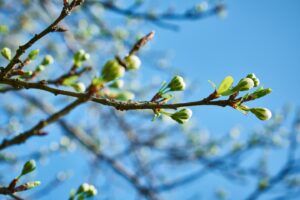By Lisa Taylor
Spring forward, fall back.
 This biannual ritual is one way we mark time and there’s always a combination of sweet and sour associated with the act of changing our clocks. In the fall, we welcome the extra hour while lamenting the marking of the beginning of darker days. In the spring, we focus on the lost hour all the while knowing it means brighter days and warm summer ahead.
This biannual ritual is one way we mark time and there’s always a combination of sweet and sour associated with the act of changing our clocks. In the fall, we welcome the extra hour while lamenting the marking of the beginning of darker days. In the spring, we focus on the lost hour all the while knowing it means brighter days and warm summer ahead.
This cycle of light and dark, gaining and losing time, appears more broadly in our careers and lives too.
We know that there are times when we need to push through less than ideal conditions and remain in jobs that do not fully satisfy our needs—those related to finances, schedule, growth, recognition, location, impact, or relationships. We default to taking comfort in what remaining in place can offer. It’s easier, familiar. It feels less risky than change—the career equivalent of the extra hour gained in the fall as we head into cold, dark winter.
Then, as we move through different phases of our career, we look ahead and recognize that, while there may be temporary discomfort, the time has come to move forward. We experience both excitement for what lies ahead while expressing apprehension and preparing ourselves for the fatigue that can result from undertaking change.
Experts tell us that Daylight Saving Time, which we have just entered, is preferable to Daylight Standard Time. Originally designed to conserve energy and fit an agrarian schedule, Standard Time no longer serves the way we live, work, and consume. In 2019, we’re more active at twilight and in the evening than early morning. Most benefit from the light that extends our hours rather than greeting us in the earliest moments of the day.
Shifting to Daylight Saving Time can also be a symbol for how we mark time, more broadly.
We expect students and early adults to take some time to find their way. We encourage university students to pursue common first-year curriculum rather than declaring majors before exiting high school. We provide opportunities for internships, co-op, and experiential learning so students can assimilate what is being learned in the class with what is happening in a rapidly changing world of work. We allow for self-exploration and taking time to know one’s self not as the exception, but as the norm. We allow for more time early in our careers to explore a bit in the dark, knowing that clarity will eventually come.
Likewise, we know that shifting our society to expect longer periods of productivity later in life suits our times.
We have more to contribute later in our careers than ever before, and even the definition of when “later” is continues to get pushed farther and farther back. We crave every drop of light so our work and contributions remain visible. We find new projects that are meaningful and pursue them before it becomes too hard to continue. In context, the extra effort to remain engaged or to re-engage later in life is worth it, like the lost hour we experienced this past weekend. It can leave us a bit bleary —but the brighter, longer hours of sunshine beckon us to find the energy and explore new paths that have been previously hidden in the darkness.
Let’s spring forward in our careers and how we think about work.
Let’s put in the effort to see past outdated rituals and structures to find what truly serves us all as we move into the future. Let’s challenge assumptions about the possible and impossible to recognize that we have the ability to shape our own environments and futures. Let’s harness time to have it serve us as we create, collaborate and connect. Let’s shake off the fatigue associated with change and move to reveling in the joy new beginnings present.
Let’s bring our best work into the light.

